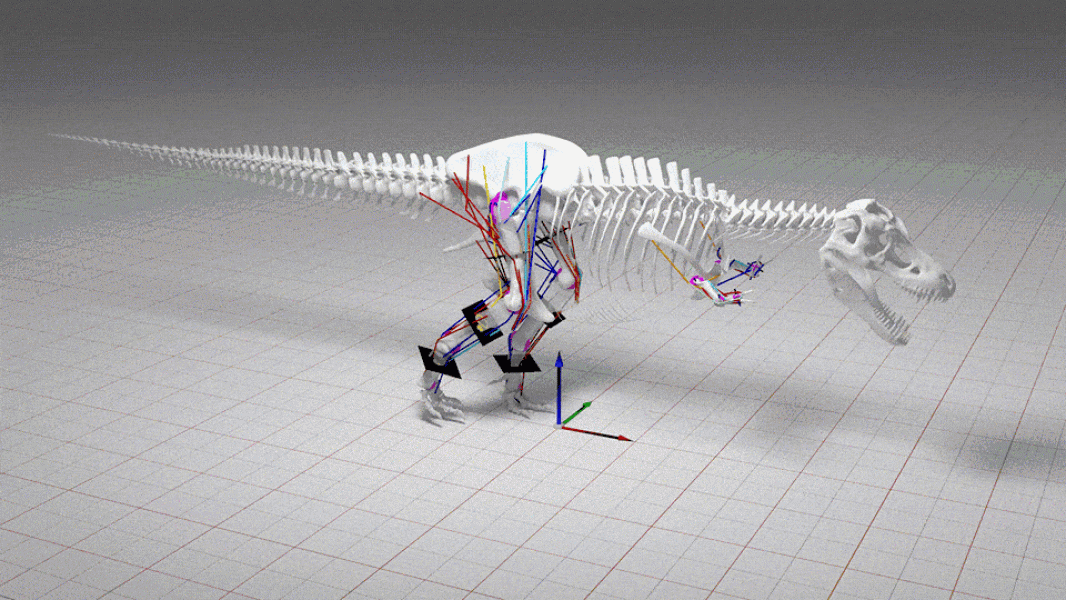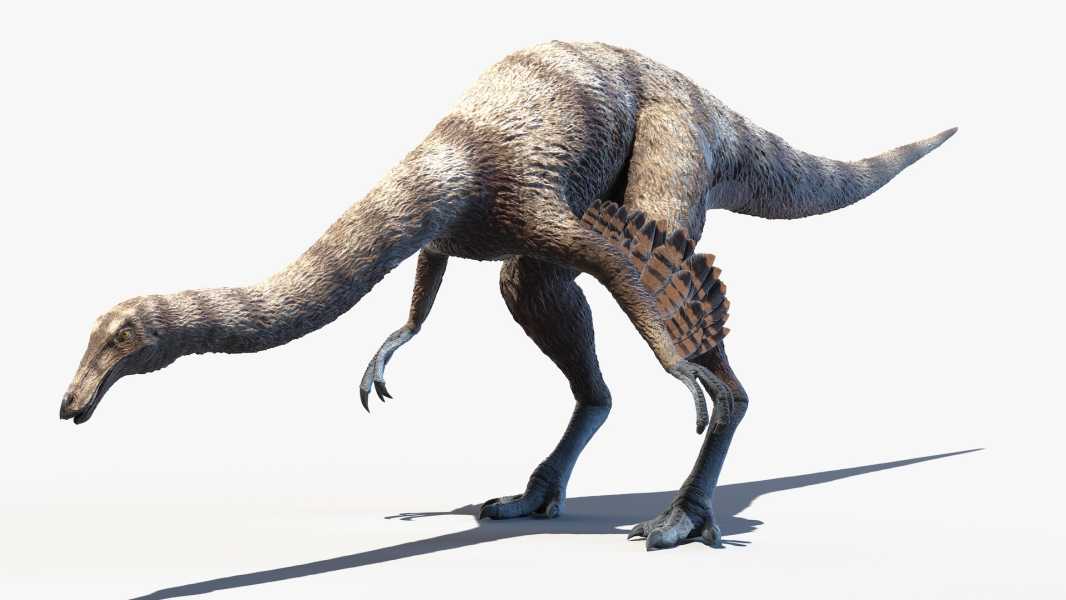
Tyrannosaurus rex, shown here running in a virtual model, was far from the fastest dinosaur. (Image courtesy of William Sellers)
Until the mid-1960s, the general consensus was that all dinosaurs were cold-blooded and slow-moving creatures. However, in the summer of 1964, a team of paleontologists led by John Ostrom discovered Deinonychus, a dinosaur with large sickle-shaped claws, a light frame, and strong legs. The fossil showed that the animal was fast and agile.
The discovery showed that some dinosaurs were active and graceful. It began the “dinosaur renaissance” – a scientific revolution that changed the way we think about dinosaurs, revealing that many were faster than previously thought.
So which dinosaur was the fastest?
“The fastest dinosaur was probably an ornithomimosaur,” Suzanne Maidment, a paleontologist at London's Natural History Museum, told Live Science. These long-legged, bipedal dinosaurs from the late Cretaceous period are often described as resembling ostriches, with features that suggest they were capable of speed.
“If you have long, thin limbs and your muscle attachments are located closer to the top of those limbs, then your leg actually acts like a pendulum, which means you can move relatively quickly,” Maidment said.
To determine which dinosaur was the fastest, we can turn to biomechanics. In the early 1970s, zoology professor Robert McNeil Alexander pioneered biomechanics, applying physics and engineering principles to the study of animal movement. Observations of modern species allowed Alexander to establish a relationship between leg length and stride length, which could be used to estimate an animal’s speed.

The ostrich-like dinosaur Ornithomimus, a member of the ornithomimosaur group, may have been one of the fastest dinosaurs.
“The faster an animal moves,” Alexander noted, “the longer its strides.” Inspired by the resurgence of interest in dinosaurs, Alexander applied his knowledge of animal movement to the study of dinosaurs.
For years, researchers have measured dinosaur stride lengths and foot size from footprints, comparing them to the known leg lengths of existing fossils to determine a dinosaur's speed. However, Maidment points out the limitations of this method.
We also don’t know whether these dinosaurs were moving at top speed when they made their tracks, said Eugenia Gold, a paleontologist and assistant professor of biology at Suffolk University in Boston. “The really good tracks are made in softer sediments,” Gold told Live Science. “But if you’ve ever tried to run in mud, you probably can’t run at full speed.”
“Because the tracks are only partial and sometimes misleading, we don't have remarkably accurate data on maximum speed,” added William Sellers, professor of natural sciences at the University of Manchester in the UK.
So Sellers turned to evolutionary robotics and biomechanical modeling for a more accurate understanding. By simulating dinosaur movement using computer skeletons and physical models, Sellers predicted how the animals would move in three-dimensional space, allowing him to more realistically estimate their top speed. Because soft tissues like muscle and tendon don’t fossilize, he had to estimate muscle size and mass. He says his estimates are justified because “vertebrate muscles don’t vary that much.”
Sourse: www.livescience.com





